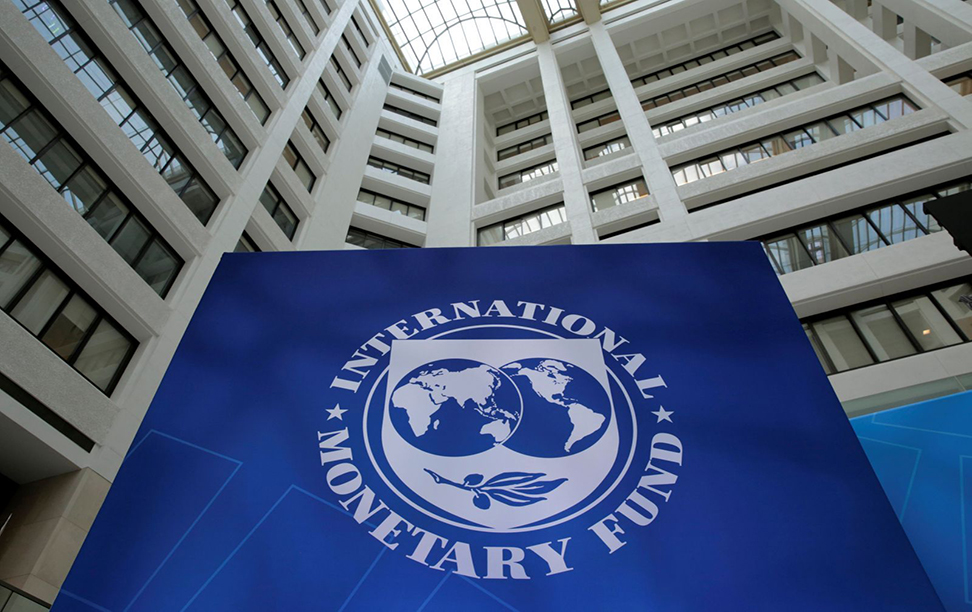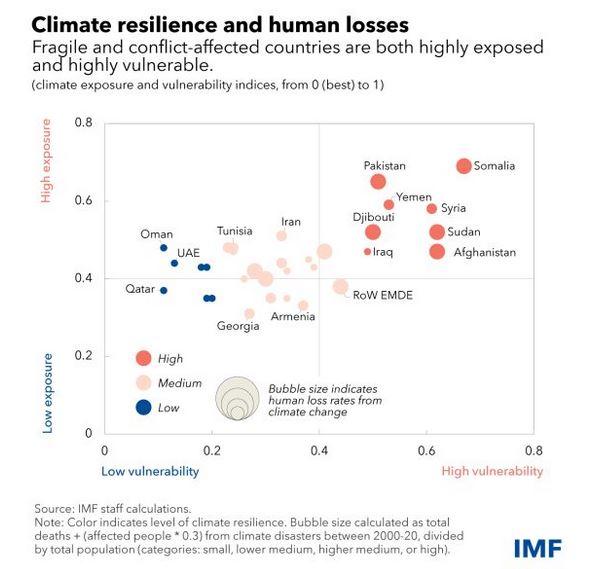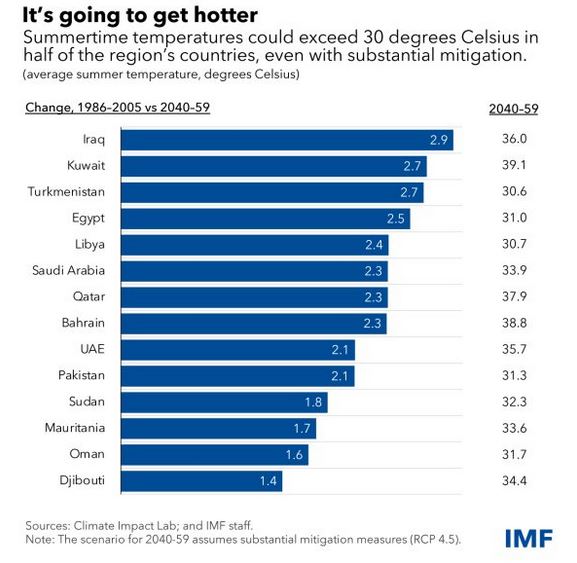Climate change kills more people in low resilient countries like Pakistan

MG News | March 30, 2022 at 05:18 PM GMT+05:00
March 30, 2022 (MLN): Countries with low climate resilience, including fragile and conflict-affected states such as Pakistan, Afghanistan, Somalia, and Sudan, captured by both exposure and vulnerability to climate hazards, have suffered intensely with more people killed or affected, the International Monetary Fund (IMF) said in its latest post.
Many people in these countries live off rain-fed subsistence farming, which is especially vulnerable to climate shocks. The challenge is compounded by political and macroeconomic instability, low socioeconomic and financial development, and risks to food and social security.
The report noted that climate change is also inflicting crippling losses in the Middle East and Central Asia.
In any given year since 2000, climate disasters have killed more than 2,600 people, affected 7 million others, and caused $2 billion in direct material damage.
According to the report, climate disasters in the region reduce annual economic growth by 1-2 percentage points on a per capita basis. And these events are expected to become more common and more severe as the planet heats up.
Over the past three decades, temperatures in the region have risen by 1.5 degrees Celsius—twice the global increase of 0.7 degrees Celsius. This has been particularly harmful for countries that are already hot.
A temperature increase of 1 degree Celsius in five of the hottest countries (Bahrain, Djibouti, Mauritania, Qatar, and the United Arab Emirates) results in an immediate decline in per capita economic growth of around 2 percentage points.
While, countries with stronger institutions and climate-resilient infrastructure, for example, heat-resistant buildings or efficient irrigation systems, have generally experienced lower human losses. The same is true for those with higher levels of socioeconomic and human development, such as the Gulf Cooperation Council countries, it highlighted.
Despite global efforts to curb carbon emissions, further intensification of climate stresses seems inevitable. By 2050, the report is of the view that average summertime temperatures could exceed 30 degrees Celsius in half the region’s countries.
Seasons are also likely to become drier in the Middle East and North Africa, and rainfall patchier in the Caucasus, Central Asia, and Pakistan, making droughts more likely. In Tajikistan, the annual probability of climate-induced droughts could rise tenfold from 3 percent today to more than 30 percent by the end of this century.
For lower-income, fragile and conflict-affected countries, which have suffered heavy losses historically, the immediate priority should be strengthening disaster preparedness, while improving the capacity of institutions to address climate change and the ability of communities to respond to shocks.
Stepping up adaptation efforts will require significant additional spending and, therefore, financing.
Between 2009 and 2019, bilateral and multilateral organizations provided around $70 billion in climate finance to the region, according to our calculations, based on data from the Organisation for Economic Co-operation and Development. However, a large proportion was for mitigation initiatives and only around a quarter solely for adaptation. Estimated adaptation needs are much greater, it added.
The COP27 summit in Egypt later this year offers an opportunity for the international community to scale up its climate finance contributions and support adaptation in developing economies.
Copyright Mettis Link News
Related News
| Name | Price/Vol | %Chg/NChg |
|---|---|---|
| KSE100 | 134,299.77 290.06M |
0.39% 517.42 |
| ALLSHR | 84,018.16 764.12M |
0.48% 402.35 |
| KSE30 | 40,814.29 132.59M |
0.33% 132.52 |
| KMI30 | 192,589.16 116.24M |
0.49% 948.28 |
| KMIALLSHR | 56,072.25 387.69M |
0.32% 180.74 |
| BKTi | 36,971.75 19.46M |
-0.05% -16.94 |
| OGTi | 28,240.28 6.19M |
0.21% 58.78 |
| Symbol | Bid/Ask | High/Low |
|---|
| Name | Last | High/Low | Chg/%Chg |
|---|---|---|---|
| BITCOIN FUTURES | 118,140.00 | 119,450.00 115,635.00 |
4270.00 3.75% |
| BRENT CRUDE | 70.63 | 70.71 68.55 |
1.99 2.90% |
| RICHARDS BAY COAL MONTHLY | 97.50 | 0.00 0.00 |
1.10 1.14% |
| ROTTERDAM COAL MONTHLY | 108.75 | 108.75 108.75 |
0.40 0.37% |
| USD RBD PALM OLEIN | 998.50 | 998.50 998.50 |
0.00 0.00% |
| CRUDE OIL - WTI | 68.75 | 68.77 66.50 |
2.18 3.27% |
| SUGAR #11 WORLD | 16.56 | 16.60 16.20 |
0.30 1.85% |
Chart of the Day
Latest News
Top 5 things to watch in this week
Pakistan Stock Movers
| Name | Last | Chg/%Chg |
|---|
| Name | Last | Chg/%Chg |
|---|





